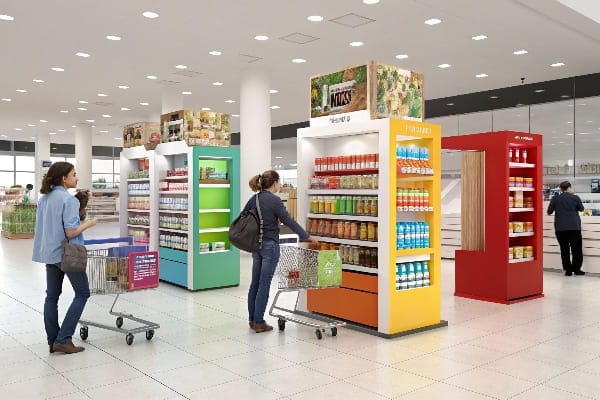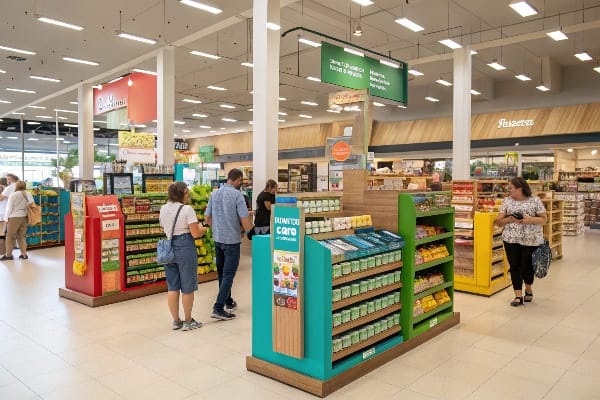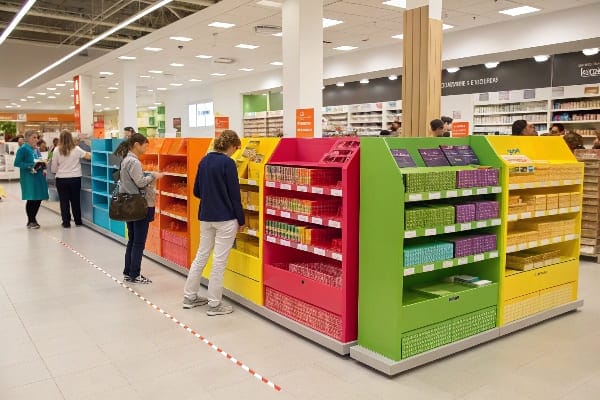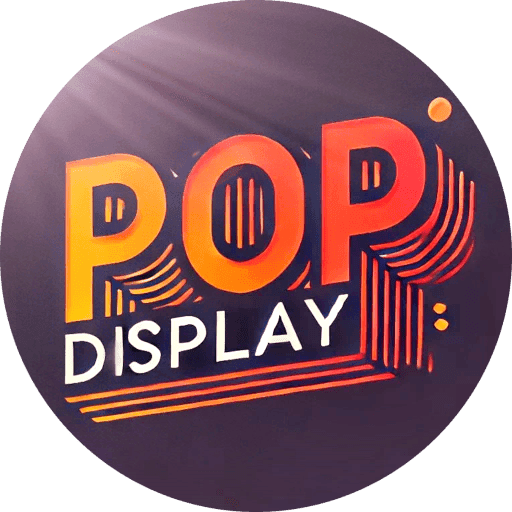作为购物者,您可能已经注意到,某些产品似乎总是比其他产品更多。这不是巧合。零售商战略性地将产品放在眼睛层面上,以最大程度地提高其可见性和推动销售。但是,为什么这个位置如此重要?让我们仔细研究它的工作原理以及零售商为什么使用这种策略。
零售商将产品放在眼睛水平上,以使商品更可见和易于使用,以增加销售。这个位置利用了消费者专注于直接面前的自然趋势。

在本文中,我们将更深入地研究零售商店中的眼睛水平放置概念。从零售货架的高度到其背后的心理学,我们将分解使这种策略如此有效的原因。
零售的眼睛水平是多少?
您是否曾经想过零售业中的“眼睛水平”到底是什么意思?这不仅是零售商使用的模糊术语 - 它具有确切的定义,在营销策略中起着巨大的作用。
在零售业中,眼睛水平是指客户站立时自然落下的高度。这个位置至关重要,因为它增加了购物者与产品互动的可能性。

眼睛水平通常定义为距地面4至5英尺(1.2至1.5米)之间的高度,尽管这可能取决于目标市场的平均高度。研究表明,大多数客户将大部分时间都花在这一高度上的产品上,因为它是视觉参与度1 。
例如,在杂货店中,您可能会发现零食和饮料被放在Eye 2,因为它们是高需求,冲动购买的物品3 。该区域中的产品比放置在货架上更高或更低的产品受到更多的关注,在货架上,它们不太可能被注意到。
眼睛水平在业务中意味着什么?
了解眼睛水平的位置对于任何希望最大化产品可见性和销售的零售商至关重要。但是,这个概念如何转化为业务战略的更广泛背景?
在业务中,眼睛水平是指将产品定位的方式,使他们受到最大的关注,从而增加了被购买的机会。这是一种旨在利用自然人类行为的策略。

将产品放在眼睛4不仅仅是视觉吸引力;这是关于与消费者建立潜意识的联系。研究表明,购物者更有可能直接在他们面前看到的产品,而不必弯曲或伸展。这直接转化为增加销售额和企业的更强大产品营业额。
例如,奢侈品牌经常将其最昂贵的产品放在眼睛水平上,以增强其优质状态。同时,预算友好或销售物品的位置可能较低,以鼓励顾客弯曲并捡起它们。这种微妙的技术有助于基于定价策略6 。
什么是超市的眼睛水平?
像其他零售商一样,超市在很大程度上依赖眼睛水平的概念来指导消费者购买决策。但是,在超市的背景下,眼睛级别的位置如何工作?
超市眼睛水平通常是指购物者可以轻松查看和到达产品的高度,而无需弯曲或伸展。这里放置的物品更有可能被注意到和购买。

在典型的超市中,眼睛水平的产品通常是最受欢迎的或最高利润的物品。例如,品牌经常支付高级展示7的,以确保其产品在眼睛层面上显示,购物者将首先看到它们。这种主要定位使消费者更容易地拿到策略上放置的产品,从而增加了销售的可能性。
超级市场还利用Endcaps 8 (过道末端的各个部分),作为额外的眼睛级别显示,以突出新的或季节性的物品。零售商不仅将这些位置用于高需求产品,还将这些位置用于特殊促销或季节性销售的一部分。
一家零售店的高度是多少?
在产品放置方面,零售商店的货架高度会严重影响产品的显示方式。那么,零售商店货架的平均高度是多少?
零售商店货架的高度可能会有所不同,但大多数零售货架旨在迎合普通成人的眼睛水平,通常在4至5英尺(1.2至1.5米)之间。

零售商店中的货架通常旨在适应客户的物理覆盖范围和所展示的特定类型的产品。对于诸如电器或散装商品之类的较大物品,货架将更高或更低,以适应产品的尺寸。较小或更精致的物品,例如化妆品或包装食品,往往位于眼睛水平上。
零售商还根据商店的布局和出售产品的类型来货架高度9 高端商店可能具有更高的架子以适应更优雅的展示,而折扣零售商通常会保持较低的货架以强调大量的库存。目标始终是优化与产品的消费者互动。
结论
在零售业中,眼睛水平上产品的战略放置会极大地影响销售。通过了解这种简单而有效的战术如何有效,企业可以增强客户体验并提高其销售潜力。
探索视觉参与可以为消费者行为提供见解,帮助零售商优化其显示器以提高销售。 ↩
了解眼睛水平可以增强产品放置策略,最大程度地提高零售环境中的可见性和销售。 ↩
了解冲动购买物品的策略可以帮助零售商增加自发的购买并提高整体销售。 ↩
了解眼睛水平在产品放置方面的重要性可以增强您的营销策略并促进销售。 ↩
探索消费者行为可以提供有关有效营销策略的见解,并改善您的销售方法。 ↩
了解定价策略和产品放置之间的关系可以优化您的零售布局,以提高销售额。 ↩
了解高级安置可以揭示品牌如何通过战略定位提高可见性并提高销售额。 ↩
探索端盖的影响可以提供对有效推动销售的有效销售技术的见解。 ↩
了解货架高度策略可以增强产品可见性和客户参与度,这对于零售成功至关重要。 ↩

